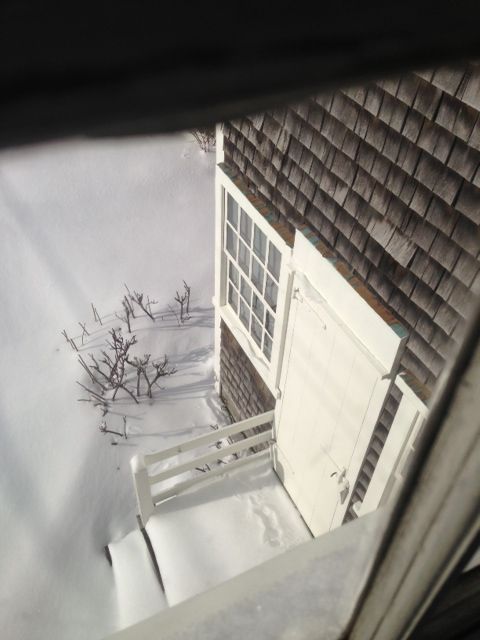Nantucket Maria Mitchell Association's 11th Annual Nantucket Science Festival
NANTUCKET, MA—The Nantucket Maria Mitchell Association (MMA) announces its eleventh annual Nantucket Science Festival (AckSciFest) to be held March 15, 2025, in collaboration with over fifteen Nantucket community partner organizations. The MMA will host its FREE STEAM-inspired day of hands-on learning and exploration on Saturday, March 15 from 10:30am – 2pm, with the addition of a designated sensory-friendly hour, for diverse families, starting at 9:30am.
This year’s theme focuses on “Waves of Discovery” and a mission to engage the Nantucket community in intersectional STEAM experiences. This event exemplifies the MMA’s mission of creating opportunities for all to develop a life-long passion for science through education, research, and first-hand exploration of the sky, land, and sea of Nantucket Island. This festival has become the largest late winter event in our community!
This year, the festival will reinforce discovery by collaborating with a diverse portfolio of community partners to demonstrate the diversity of STEAM. “We are thrilled to return for yet another year with an intersectional festival offering,” said Jónelle Gurley, coordinator of AckSciFest and Director of Science and Programs at the MMA. “The enthusiasm of our collaborators each year certainly drives the community engagement and interest.”
This year’s community partner organizations include: the Artists Association of Nantucket, Egan Maritime Institute, Girl Scouts - Nantucket, Linda Loring Nature Foundation, Mass Audubon, Nantucket Atheneum, Nantucket Community School, Nantucket Conservation Foundation, Nantucket Dreamland, Nantucket Fire Department, Nantucket Police Department, Nantucket Historical Association, Nantucket Land and Water Council, Nantucket Islands Land Bank, Nantucket Lights, Nantucket New School, Nantucket Shellfish Association, Oika, UMASS Boston Field Station Nantucket, US Coast Guard Station Brant Point, Nantucket S.T.A.R, and Sustainable Nantucket. All will be highlighting the incredible opportunities to discover STEAM on Nantucket.
This event is FREE of charge and takes place at the Nantucket High School Gymnasium. Attendees will be able to participate in a range of hands-on activities and experiences. This year’s activities include, but are not limited to, “Ice Painting,” “Oceans: Waves for All Story Walk,” “Solutions for Plastic Pollution,” “Ocean Sensory Bins,” “My Summer Garden,” “Bird Banding Bonanza,” “The Unbel-Eeel-vable Adventure,” “Mobile Touch Tank Exploration,” “Waves in Action,” “The Simple Machines that Power the Olde Mill,” and many sensory crafts, general chemistry and astronomy related activities, and engineering and space exploration fun. The Nantucket Public Safety Departments will also be present for “Touch a Cruiser” and “Touch a Truck” and the US Coast Guard Station (USCG) Brant Point will be in attendance to display coming lifesaving gear and a trailered USCG vessel. The Nantucket Science Festival is made possible thanks to the generosity of its volunteers, partner organizations, and generous sponsors.
ABOUT THE NANTUCKET SCIENCE FESTIVAL
Founded in 2015, the Nantucket Science Festival is a mid-March collaborative community event, featuring hands-on science, technology, engineering, art, and mathematics activities. It is an initiative of the Maria Mitchell Association in partnership with various Nantucket non-profit organizations, schools, and businesses. For more information, please visit https://www.mariamitchell.org/nantucket-science-festival
The Maria Mitchell Association was founded in 1902 to preserve the legacy of Nantucket native astronomer, naturalist, librarian, and educator, Maria Mitchell. After she discovered a comet in 1847, Mitchell’s international fame led to many achievements and awards, including an appointment as the first female professor of astronomy at Vassar College. Maria Mitchell believed in “learning by doing” and today that philosophy is reflected in the MMA’s mission statement, programs, research projects, and other activities. The Maria Mitchell Association operates two observatories, a natural science museum, an aquarium, a research center, and preserves the historic birthplace of Maria Mitchell. A wide variety of science and history-related programming is offered throughout the year for people of all ages
###
For Immediate Release
March 5 2025
Contact: Jónelle Gurley
jgurley@mariamitchell.org
Recent Posts




